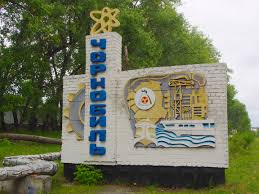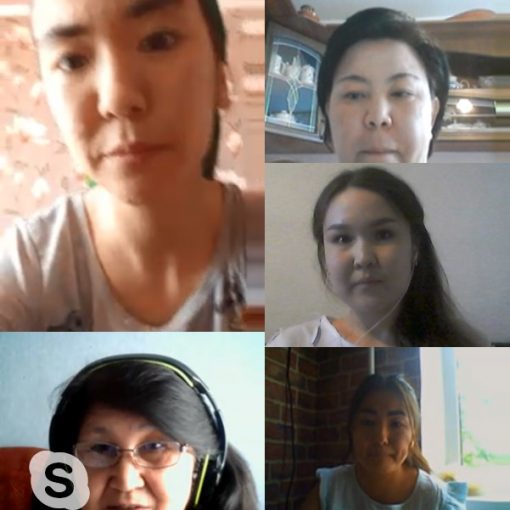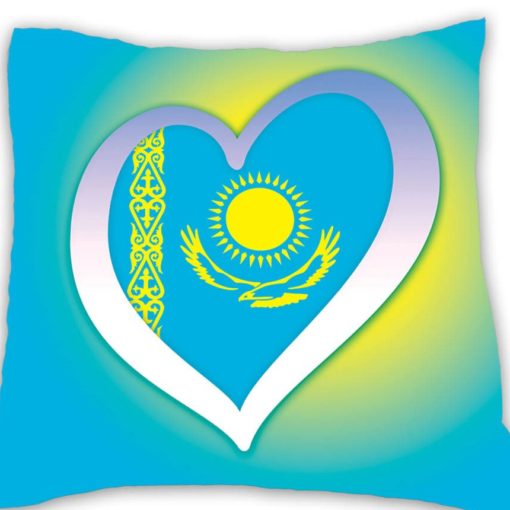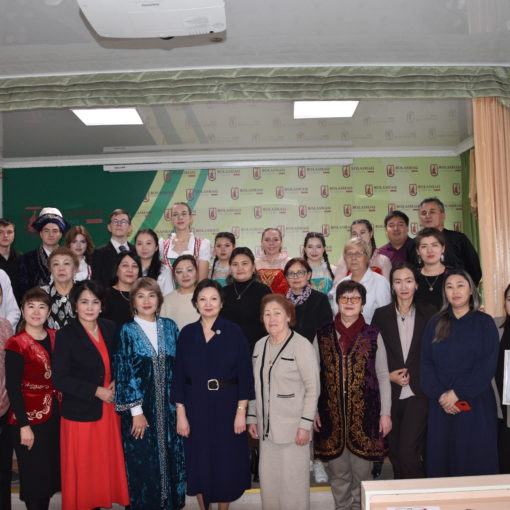Research center “Rukhaniyat” Academy “Bolashaq” held online quiz “Memory of Chernobyl”. The participants of the online quiz were the students of all educational programs of the Academy “Bolashaq”.
The aim of the online quiz is to form a personal attitude of young people to the manifestations of heroism and sacrifice in peacetime, in extreme situations.
Tasks:
fostering patriotism and a sense of active civic responsibility in the young generation;
motivating young students to show a not indifferent, responsible attitude to various life situations;
to develop the ability to analyze the information presented in different sign systems, to express their point of view argumentatively;
developing a sense of responsibility through the tragic events of Chernobyl;
formation of humanistic qualities of personality.
The quiz was held in 2 stages and included:
Stage I – passing the test questions “Chernobyl 1986: facts and names”.
Stage II – writing an essay “Memory of Chernobyl”.
The jury of the quiz consists of the Vice-Rector for Social and Educational Work Akhmetova B.T., Director of SIC “Rukhaniyat”. Aupenova A.U., head of the department of general disciplines Kasenov E.B., chairman of the Council of Young Scientists Ibrakhimova K.T. and chairman of the youth association 1% Akhmaltdinov R.R. determined the finalists.
I place Tupitsyna Natalia, a student of FM-19-1;
Taimazova Seda, a student of IN-19-1.
II place – Kovalchuk Christina, a student of IN-19-1;
Moroz Olga, a student, 19-1;
Perepechkina Karina, a student of PIP-19-1.
III place – Bychek Lyubov, a student, IN-19-1;
Ospanov Madiyar, a student, Yu-19-1.

Presenting essays finalists online quizzes:
Tupitsyna Natalia, a student of FM-19-1.

CHERNOBYL: THE TERRIBLE CONSEQUENCES 26 AUGUST 1986
Everyone certainly believes that the accident at the Chernobyl nuclear power plant is one of the most horrific examples of what can happen due to a small human mistake. But not everyone guesses the terrible consequences that the accident left behind.
For example, I did not even know about the accident until I was explained to everyone in physics class. I understood, of course, that there was quite a lot of radiation from the explosion, but I didn’t understand the term radiation, so I laughed so much fun at the jokes of my classmates about two-headed animals and mushrooms that have legs.
Of course, radiation has an impact on living organisms and causes various mutations, but not so much.
The explosion at the nuclear power plant had terrible consequences immediately: the explosion alone killed about 4 to 10 thousand people. The accident caused a fire, which was extinguished only 10 days after it started. That’s all, not to mention the number of people who died from radiation sickness, while the inhabitants of not only Ukraine, but also Russia and Belarus were affected.
As a result of the accident, many pregnant women from nearby countries were exposed to radiophobia (radiophobia is a complex of disorders expressed in fear of various sources of ionizing and non-ionizing electromagnetic radiation, such as radio) and about 100,000-200,000 abortions were performed.
Of course, most people are interested in the question “when will life return to Pripyat again? This question is still unanswered, because even today, in most parts of this city, there is still high radiation. But despite this, there are still people in the city who have illegally returned to their homes and continue to live there. Most of them are elderly people who want to live the rest of their lives on their native land.
And I would like to remind you that there are still no schools or hospitals working in this place, because neither this city nor the surrounding towns have recovered from the scale of the tragedy that happened there. Therefore, you should not give in to some fashionable currents and save your health.


Taimazova Seda, a student, IN-19-1.
THE CRASH OF THE CHERNOBYL APS, ITS CONSEQUENCES AND CULTURAL IMPACT
The accident at the Chernobyl nuclear power plant ranks among the worst disasters of the 20th century, along with the earthquake in Armenia and the Great Smog. On the night of April 26, 1986, it took the lives of thousands of people, among whom were not only employees of the plant and residents of the nearby regions, but also detachments sent to help and rescue. The impact of the Chernobyl disaster on people and the environment caused the need to address previously unknown global challenges of global scale, affecting all aspects of public life, economy, culture, law.
In addition to the dead people, a large territory was also affected, with many animals that could not be taken care of. Among the consequences of the environmental impact are: curvature and tumor thickening of the stems, asymmetry and curvature of leaves, increased growth of lateral shoots, dwarfism, shrubbery, gigantism, “redwood”, as well as violations at the cellular level.
From the destroyed Chernobyl nuclear reactor a huge amount of radioactive substances flew into the atmosphere, which within a short period of time managed to spread over a huge territory. The map of contamination has a 30 km exclusion zone, approaching which will be dangerous for more than a hundred years. It includes three areas of contamination: the central, Bryansk-Belarusian, and the Tula, Kaluga and Oryol areas. Hundreds of thousands of people who were near the epicentre of events were evacuated from these areas. The tragedy in Chernobyl left its mark on the entire world map, and the radioactive cloud managed to visit many parts of the world in the immediate vicinity of the destroyed reactor.
Changed as a result of the Chernobyl disaster conditions of life, work, life of the population of the affected regions, the nature of its psychological and moral state have been reflected in the indicators of human health: in addition to severe consequences in the form of violations of the genetic level, as well as injuries from the direct presence in the danger zones there is an increase in personal anxiety, decrease in the level of well-being, activity, mood.
This catastrophe has destroyed a lot, but also left a big trace in culture, reflected in the works of artists, poets, directors and writers. David Bowie’s song “Time Will Crawl” (1987); a series of thirty paintings “The Lights of Pripyat or the Shadow of Chernobyl” was created by the Kyrgyz and Ukrainian artist Roman Gumanyuk; Markiyan Kamysh wrote a novel about Chernobyl illegal trips “A Walk into the Zone”; Krista Wolf wrote the novel “The Accident. The Chronicle of One Day”; and many other examples of art that were inspired by the disaster. This was an important step towards understanding how terrible this tragedy was and what could have happened again. After all, today there is still a living generation in front of whom the catastrophe took place. They, too, are trying to convey to us the horror of that time and the fear that it might happen again. There are still talks and theories about how things could have changed without the government hiding information.
Besides people’s minds, the industry itself has also changed a lot since Chernobyl. A huge modernization program has been carried out on all the nuclear power plant units with a lot of funding. It included more modern safety systems, more modern fuel and better regulation.
The accident at the Chernobyl APS has caused enormous economic, moral and genetic damage to human civilization. It caused many deaths and destructions, became one of the nightmares of the twentieth century. However terrible it was, we should remember about it and, learning from the mistakes of the past to do everything not to experience similar in the future.


Kovalchuk Kristina, a student, IN-19-1.
PEACE ATOM
The use of atomic energy is the reality of our days. However, the peaceful atom also carries a lot of dangers. This is evidenced by the consequences of accidents at nuclear facilities. On April 26, 1986, there was an accident at the Chernobyl nuclear power plant. As a result of the destruction of the reactor and its core, tens of millions of curies of radioactive substances have entered the environment. Radioactivity output was 100 times greater than that of the two atomic bombs dropped by the United States on the Japanese cities of Hiroshima and Nagasaki in 1945. The reactor of ChNPP Unit 4 was completely destroyed and represented an open and life-threatening powerful source of radiation and aerosol contamination. In the first days after the accident, the issue arose of constructing a facility to prevent radionuclides from spreading from the destroyed reactor and protect the surrounding area from penetrating radiation. A decision was made to construct a temporary containment known as a shelter or sarcophagus facility. In spring and summer 1986, birds not only left the 30 km zone: many tens of kilometers around Chernobyl were not heard by birds’ voices. Two years turned out to be enough for a small unsightly butterfly to breed in such an amount that it destroyed the huge massifs of oak groves growing in those places.
The destruction of nature to meet current production, often false needs and meaningless needs always involves the loss of immeasurably large values, losses that are usually irreplaceable. The explosion of a nuclear power plant is already a global disaster. The total long-term impact of radiation from a completely destroyed reactor like Chernobyl is, according to experts, adequate to the explosion of a 10 megaton nuclear bomb. Advances in science and technology have provided enormous opportunities for using the energy of the atom, but is there enough knowledge and common sense to ensure the reliability and safety of this process? Chernobyl still makes itself felt. The radioactive contamination of vast areas, rivers and lakes, cities and villages is only part of the tragedy. The main thing on Earth remains human life, and it is this life that has been threatened. It is no secret that, after the Chernobyl tragedy, many people died, became even more ill, and terrible figures continue to rise steadily. The incidence of cancer has increased two to three times in adults and dozens of times in children. There is a weakening of the immune system, changes in blood composition and genetic code. Especially terrible it affected children – how many mutations, incredible diseases, numerous disorders of the body … Lessons from Chernobyl … This phrase has already become a stamp. However, it’s not yet clear if we have learned them well. Of course, concrete measures have been taken, and an exact replication of the Chernobyl tragedy is impossible. But is it over with its deep roots?
It is not only in our time that people have faced the negative consequences of environmental impact. The exhausted and abandoned lands, which contain material remnants of peculiar cultures, are found on all continents. Where are their inhabitants? They are all victims of disasters caused by the destruction of the environment. In this connection, the words of M.M. Prishvin are recalled: “Man creates the world in his own image, but the world exists without man”. If those who could not stop in time died, if those who did not bring the environment to disaster survived, it means that natural selection could act: there were developed protective mechanisms that changed the behavior in case of a dangerous violation of the environment. One of such mechanisms was a love for nature. Compassion for animals, for trees. The desire not to spoil them in vain, more than necessary. The necessary “program” of a normal person is love for nature. A man indifferent to nature, in my opinion, is damaged.
Fortunately, nature itself seeks to preserve the balance of all life. The interconnected world of living nature that surrounds us is a powerful self-regulating mechanism. But we have no right to test it endlessly. I believe that in the 21st century, reason will prevail.


Моroz Olga, student of Yu -19-1
MEMORY REVIVES LIFE
On April 26, 1986, an accident occurred at one of the reactors of the Chernobyl Station. The Chernobyl disaster was the largest in the history of nuclear power. Subsequently, the city of Chernobyl was included in the top ten most contaminated places on the planet. At the moment, the reactions are still strongly affecting nature around the station within a 30 km radius. However, its level was dangerous only in the first few years, now the “exclusion zone” has become 100-1000 times safer.
Despite the urgent evacuation, soon the number of N’s inhabitants returned, “self-settlers”, and now live there. If you can still find residents in Chernobyl, it is true that most of them are employees of enterprises, but still. What Pripyat was left forever in 1986 is the very day that all this happened, all because of its large radiation background. You can get to the “zone” only through the checkpoint, as there is a fence built around the city, but it does not stop stalkers and just adventurers.
The most favorite place for all extreme photographers is the kindergarten and school, where notebooks, textbooks and dolls are scattered everywhere.
Efforts to eliminate the Chernobyl accident have been underway for 34 years, but even in 80 years people will not be able to live in contaminated areas. The terrible thing is that the built sarcophagus, which scientists calculate should contain radioactive substances, has not met expectations – radioactive substances are still being regenerated. It is possible to draw an absolutely obvious conclusion: mankind is not ready for safe use of atomic energy.
But what conclusions did mankind itself make?
It is wrong to think that Chernobyl accident is in the past, no, it is in the future.


Perepechkina Karina, student of PIP-19-1к
AND AFTER 34 YEARS, WE REMEMBER
The memory has its own path,
Your unreadable lines,
His high destiny,
Save her, hold on to her,
And the essence of it will become clearer,
Life goes away, memory comes,
And memory revives life.
(From the front diary)
It has been 34 years since the Chernobyl disaster. The accident has become one of the most severe disasters, the consequences of which will be felt for more than a decade. As a result of the explosion, 190 tons of radioactive substances were released into the atmosphere.
On April 26, 1986 at 01:23:47 at the 4th unit of the Chernobyl nuclear power plant there was an explosion that completely destroyed the reactor. The building of the unit partially collapsed, killing two people: one died immediately, the second was taken to hospital. There was a fire in various rooms and on the roof. The accident resulted in the release of radioactive substances into the environment. According to experts, the total yield of radioactive materials was 50 million curies, which is equivalent to the consequences of the explosion of 500 atomic bombs dropped in 1945 on Hiroshima.
The memory of the tragedy will remain in the soul of our people.
The feat performed by the liquidators of the Chernobyl accident will never be forgotten. It’s bitter to realize that there are fewer of these heroes every day. We must all remember their feat. For the 34th year in a row, we have remembered that terrible tragedy that night. It would seem that so much time has passed, but the feeling still pierces the soul. It’s terrible to experience that moment in your memories.
Without drama, we can safely say that all those who worked for the accident should be called heroes, because they are. And the helicopter pilots who built the sarcophagus threw concrete and cement at the reactor to close it. And those who cleaned up the reactor debris scattered by the explosion. And those who washed away the radiation dust, removed the contaminated layer of ground. Because it was only thanks to the exploits of these people that the poisonous cloud of Chernobyl was localized.
Time takes things back to the past. But Chernobyl will forever remain in the memory of our liquidated countrymen.
The subject is not yet closed:
Troubles…
Chernobyl…
Human…


Bychek Lyubov, student of IN-19-1
DISASTER CONSEQUENCES
April, 1986
Unfavorable jam…
Bitterness of words on the blood…
The smoky torch of revelation…
The fever of love…
But to hearts for unity.
There’s still a brief moment left,
And insomnia in an instant.
She went off in the night screaming…
Ice of Chernobyl Rock
Stamped on your mouth,
And don’t take that off.
Before the coming of Christ…
В. Strutinsky
On April 26, 1986, the worst radiation disaster in history occurred at the Chernobyl nuclear power plant. As a result of constructive flaws and human errors, there was a catastrophic explosion in the core of the nuclear reactor. As a result of the destruction of the reactor and its core, tens of millions of curies of radioactive substances have entered the environment. The power of release of radioactivity in 100 times has exceeded indicator at explosion of two atomic bombs dropped by the USA on Japanese cities Hiroshima and Nagasaki in 1945. The reactor of ChNPP Unit 4 was completely destroyed and represented an open and life-threatening powerful source of radiation and aerosol contamination. In the first days after the accident, the issue arose of constructing a facility to prevent the spread of radionuclides from the destroyed reactor and protect the area from penetrating radiation. A decision was made to construct a temporary containment known as a shelter or sarcophagus facility.
In spring and summer 1986, not only did birds leave the 30 kilometre zone: no bird voices were heard around Chernobyl. Two years was enough for a small butterfly to breed in such an amount that it destroyed the huge massifs of oak groves growing in those places. The radioactive contamination of vast territories, rivers and lakes, towns and villages is only part of the tragedy. Human life has become a major threat on Earth. A lot of people died after the Chernobyl tragedy, and even more became ill. Adults became more likely to get cancer. There was a weakening of the immune system, changes in blood composition, genetic code. Especially terrible was the impact of the disaster on children – mutations, incredible diseases, numerous dysfunctions of the body …
The history of the Chernobyl zone after the catastrophe is quite complicated, but nature has the ability to absorb and respond, but even here there are disadvantages no ecosystem has been able to fully recover from the disaster. Instead, people go through stages of adaptation and change in their daily lives. We do not have enough knowledge to predict what will happen next. An amazing second chance for life was given to animals in the Chernobyl Exclusion Zone, which tells us that evolution can be so unpredictable. Fortunately, nature itself seeks to maintain the balance of all living things. The living world that surrounds us is a self-regulating mechanism. But we have no right to test it endlessly.


Ospanov Madiyar, student of Yu-19-1.
GREAT LESSON FOR HUMANITY
I wouldn’t lie if I said I didn’t know about the terrible tragedy of the twentieth century at that time. I don’t know much about that disaster myself. In general, starting from the age of 8, I got a CD with a computer game “S.T.A.L.K.E.R”, which is still being released today. Briefly, the game was developed based on the book “Picnic on the sidelines” by the Strugatsky brothers. It refers to three veterans of stalkers, who tried to understand the very understanding of “Zone”. The location for this game was an abandoned city of Pripyat and the Chernobyl nuclear power plant and its surroundings. It was because of the fact that this game was connected with the accident, I began to study this tragedy “from A to Z”. I confidently come to the conclusion that this is a terrible tragedy of the last century. Remember only the stories of the liquidators about extinguishing a 10-day fire with a respirator SHB “Petal”, which had to change the filter 2 times a day. About the employees of the Chernobyl nuclear power plant, who worked at the time of the explosion. About unsuspecting residents of Pripyat, who had to leave their homes in a hurry, taking only the most important things. And those people who found themselves in the first hours, day and week, on liquidation of the accident, without necessary means of protection from radiation and as a result received acute radiation diseases and cancer. I am sorry that I cannot go on, because I am covered by emotions, by the consequences of this tragedy. I’ll just say one thing, it’s a huge lesson for humanity that it has never made the mistakes that cause the death of millions.






